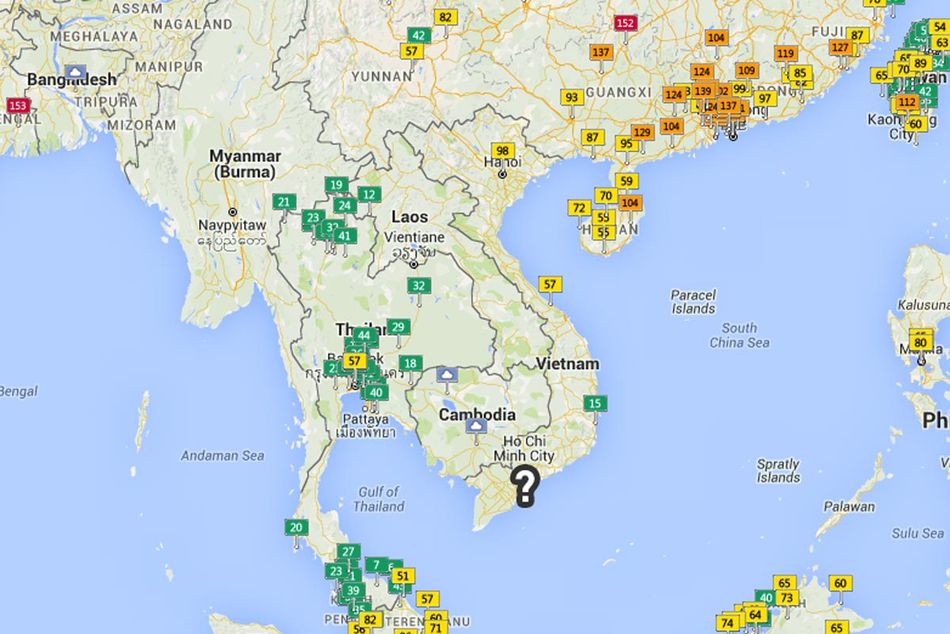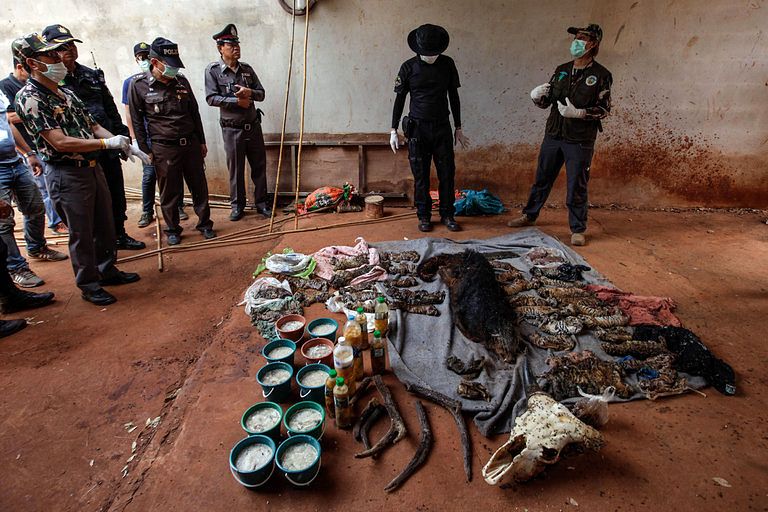If you've ever taken a deep breath during rush hour, you know clean air is not exactly abundant in Saigon.
Around the globe, ambient air pollutions kills 3.7 million people a year, according to the World Health Organization (WHO), with nearly a million of those deaths happening in Southeast Asia.
Of course, it could be worse – according to The Atlantic, a recent study found that air pollution in China prematurely kills over 4,000 people a day – but things aren't exactly great here, either. In fact, Vietnam is among the 10 worst countries in the world when it comes to air pollution.
Of all the things floating around in Saigon, the most dangerous pollutants are PM2.5 particles, which are around 1/30 the width of a human hair and can lead to a host of medical problems, including respiratory infections, lung cancer, heart disease and stroke.
By WHO standards, clean air contains less than 10 micrograms of PM2.5 particulate matter per cubic meter (μg/m3). As you might expect, Hanoi (39μg/m3) and Saigon (27μg/m3) come in well above this mark.
All this makes for a strong argument in favor of air quality monitoring. Earlier this month, Beijing-based Air Quality Index China released a brand new interactive map which charts air pollution across the world. According to the Huffington Post, the map draws upon data from environmental protection agencies in roughly 1,000 locations and automatically updates every 15 minutes.
While all this is good news, you'll notice the map only includes Hanoi, Hue and Nha Trang. Saigon is strangely absent; you would think the country's most populous city should have some recorded data on air pollution.
As it turns out, the answer is complicated. While the Ho Chi Minh City Environment Protection Agency (HEPA) monitors air quality at 15 sites around Saigon, its data isn't exactly accessible. Only limited information is published on their website a few times a year, meaning that most local residents never see it.
What's more, the city's monitoring equipment is in pretty bad shape. According to Khoa Hoc Pho Thong, scientists expressed concern about the state of Saigon's air quality at a recent conference. The issue is partially a bureaucratic one, they explained, as the government arm responsible for dealing with air pollution has changed from the Ministry of Natural Resources and Environment to the Ministry of Transport. However air quality is also difficult to monitor in the city, experts contended, because most of the monitoring stations have fallen into disrepair and the machinery is either old, broken or ineffective, meaning that the public lacks access to air quality information.
While authorities aim to control air pollution by limiting the number of vehicles in the city, the benefits of such measures are a long way off. For the moment, there's not much we can do but brave the bad air.














